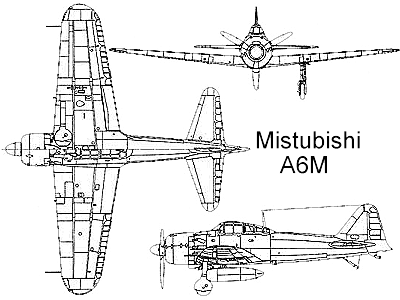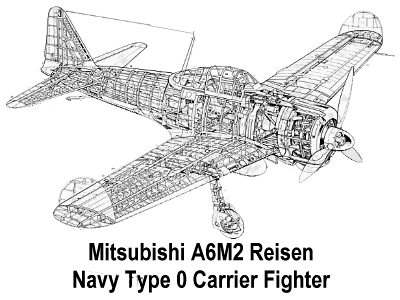The Mitsubishi A6M was a long-range fighter aircraft operated by the IJNAS (Imperial Japanese Navy Air Service) from 1940 to 1945. It was to replace the A5M as a carrier borne fighter. The A6M was designated as the Mitsubishi Navy Type 0 Carrier Fighter, and also designated as the Mitsubishi A6M 'Rei-sen' and Mitsubishi Navy 12-shi Carrier Fighter. The A6M was usually referred to by the Allies as the 'Zero'(also known as 'Zeke', the clipped wing variant was originally known as 'Hap', but General Hap Arnold objected to this and it was changed to "Hamp"), from 1940 the year in which the aircraft entered service with the Imperial Navy.
Back to Top
Development
The Mitsubishi A5M fighter was just entering service in early 1937, when the Imperial Japanese Navy started looking for its eventual replacement. In May, they issued specification 12-Shi for a new carrier-based fighter, sending it to Nakajima and Mitsubishi. Nakajima's team considered the new requirements unachievable and pulled out of the competition in January. Mitsubishi's chief designer, Jiro Horikoshi, felt that the requirements could be met, but only if the aircraft could be made as light as possible. Every possible weight-saving measure was incorporated into the design. Most of the aircraft was built of a new top-secret 7075 aluminium alloy developed by Sumitomo Metal Industries in 1936. Called Extra Super Duralumin (ESD), it was lighter and stronger than other alloys (e.g. 24S alloy) used at the time, but was more brittle and prone to corrosion which was countered with an anti-corrosion coating applied after fabrication. No armor was provided for the pilot, engine or other critical points of the aircraft, and self-sealing fuel tanks, which were becoming common at the time, were not used.
Back to Top
In Service
The first operation model was the A6M2 Model 11 which were sent to China for operation evaluation. They arrived in Manchuria in July 1940, and first saw combat over Chungking in August. There they proved to be completely untouchable by the Polikarpov I-16s and I-153s that had been such a problem for the A5Ms currently in service. In one encounter, 13 A6Ms shot down 27 I-15s and I-16s in under three minutes without loss. After hearing of these reports the Navy immediately ordered the A6M2 into production as the Type 0 Carrier Fighter, Model 11.
Pacific War
When it was introduced early in World War II, the A6M 'Zero' was considered the most capable carrier-based fighter in the world, combining excellent maneuverability and very long range. In early combat operations, the A6M gained a legendary reputation as a dogfighter, achieving the outstanding kill ratio of 12 to 1,but by mid-1942 a combination of new tactics and the introduction of better equipment enabled the Allied pilots to engage the A6M on more equal terms. The A6M quickly gained a fearsome reputation. Thanks to a combination of excellent maneuverability and firepower, it easily disposed of the motley collection of Allied aircraft sent against it in the Pacific in 1941. It proved a difficult opponent even for the Supermarine Spitfire. Although not as fast as the British fighter, the Mitsubishi fighter could out-turn the Spitfire with ease, could sustain a climb at a very steep angle, and could stay in the air for three times as long.
Back to Top
Soon, however, Allied pilots developed tactics to cope with the 'Zero'. Due to its extreme agility, engaging in a traditional, turning dogfight with a 'Zero' was likely to be fatal. It was better to roar down from above in a high-speed pass, fire a quick burst, then zoom back up to altitude. (A short burst of fire from heavy machine guns or cannon was often enough to bring down the fragile 'Zero'.) Such "boom-and-zoom" tactics were used successfully in the China Burma India Theater (CBI) by the "Flying Tigers" of the American Volunteer Group (AVG) against similarly maneuverable Japanese Army aircraft such as the Nakajima Ki-27 and Ki-43.
Back to Top
As the war progressed, a variety of models were developed with heavier weapons, clipped wings and so on. Considered the most effective variant, the Model 52 was developed to face the powerful American F6F 'Hellcat' and F4U 'Corsair', superior mostly for engine power and armament. The variant was a modest update of the A6M3 Model 22, with shorter, non-folding wing tips and thicker wing skinning to permit faster diving speeds, plus an improved exhaust system. The latter used four ejector exhaust stacks, providing an increment of thrust, projecting along each side of the forward fuselage. The new exhaust system required modified 'notched' cowl flaps and small rectangular plates which were riveted to the fuselage, just aft of the exhausts. Two smaller exhaust stacks exited via small cowling flaps immediately forward of and just below each of the wing leading edges. The improved roll-rate of the clipped-wing A6M3 was included. This version was known to the Allies as the 'Hamp'.
Back to Top
End of the 'Zero'
A valuable find was when a Zero had crash landed in the Aleutian Islands in the invasion in June 1942. When landing, the plane flipped, killing the pilot but leaving the plane mostly intact. It was recovered and sent for repairs and testing. Grumman got their hands on it, which helped developing the F6F 'Hellcat' fighter as a replacement for the F4F 'Wildcat'. The IJNAS also frequently used the type as a land-based fighter. By 1943, inherent design weaknesses and the failure to develop more powerful aircraft engines meant that the A6M 'Zero' became less effective against newer enemy fighters that possessed greater firepower, armor, and speed, and approached the A6M 'Zero's' maneuverability. Although the Mitsubishi A6M was outdated by 1944, it was never totally supplanted by the newer Japanese aircraft types. During the final years of the War in the Pacific, the A6M 'Zero' was used in kamikaze operations.
Back to Top
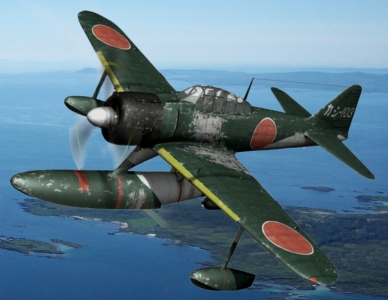 Seaplane version 'Rufe'
Seaplane version 'Rufe'
Two other versions of the Model 21 were built in small numbers, the Nakajima-built A6M2-N 'Rufe' floatplane (based on the Model 11 with a slightly modified tail), and the A6M2-K two-seat trainer of which a total of 508 were built by Hitachi and the Sasebo Naval Air Arsenal. The 'Rufe' was able to take advantage of providing local air supremacy where there where no airfields available. By placing a seaplane tender with its squadron in a small harbour, the Japanese were able to master the skies with the 'Rufe', till the USN started to counter attack. The 'Rufe' was very unweildly as a fighter with its big centerline float and as such, became easy prey for more modern fighters.
In the course of the war, more A6M 'Zeros' were built than any other Japanese aircraft, with nearly 11,000 being built.
Back to Top
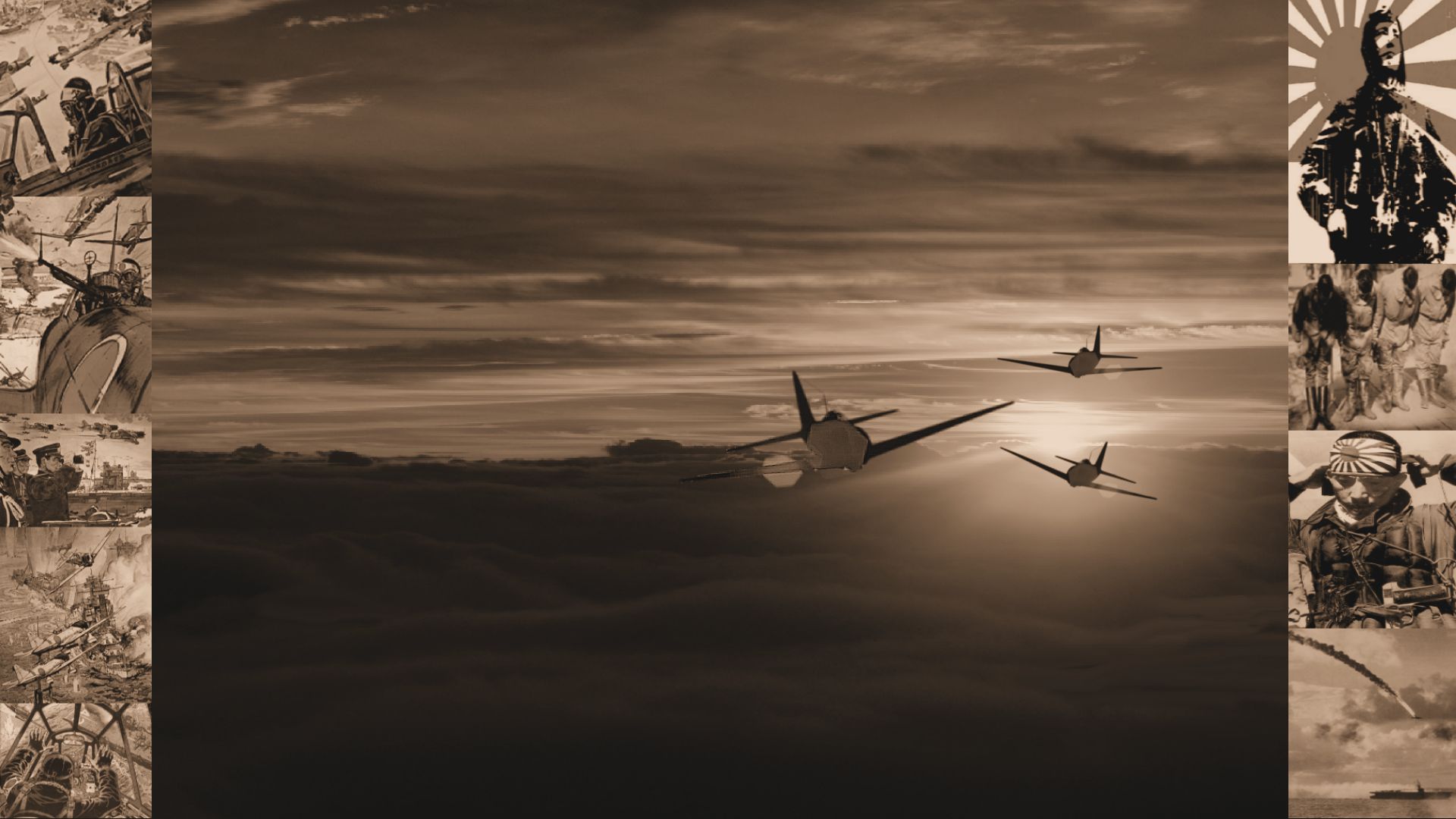

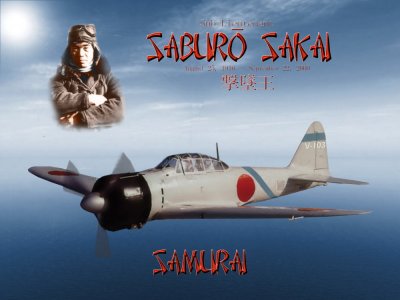
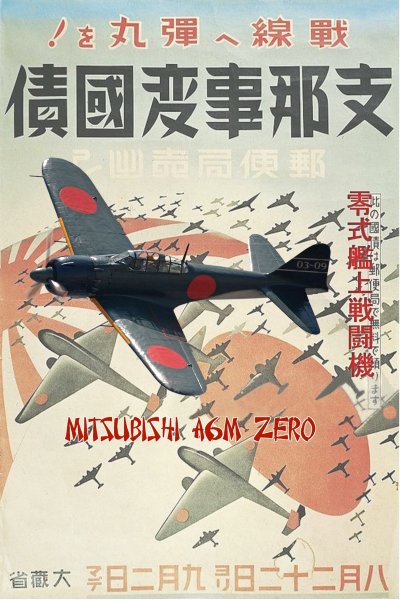

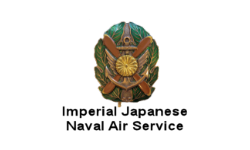
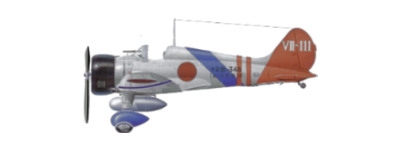 A5M
A5M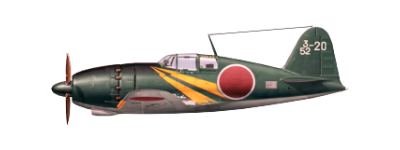 J2M Raiden
J2M Raiden N1K Shiden
N1K Shiden D3A
D3A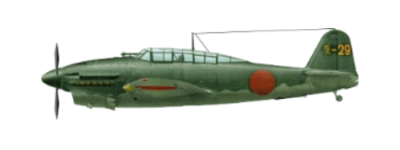 D4Y Suisei
D4Y Suisei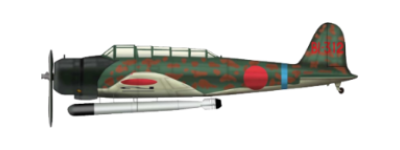 B5N
B5N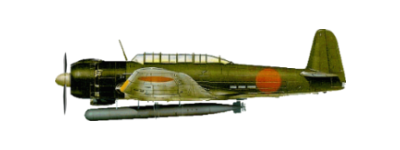 B6N Tenzan
B6N Tenzan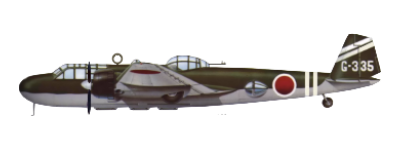 G3M
G3M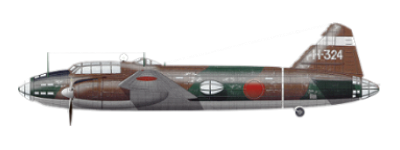 G4M
G4M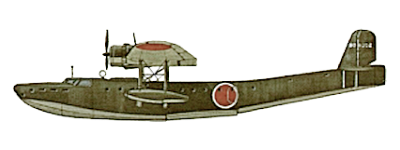 H6K
H6K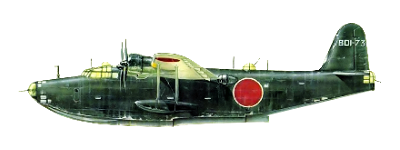 H8K
H8K
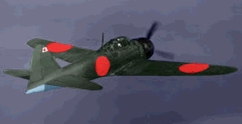

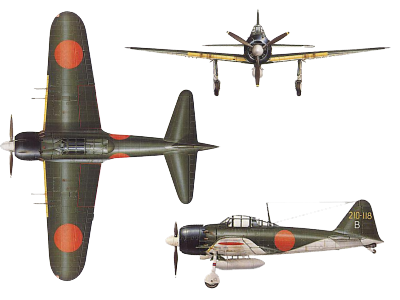
 Mitsubishi A6M 'Rei-sen'
Mitsubishi A6M 'Rei-sen'
